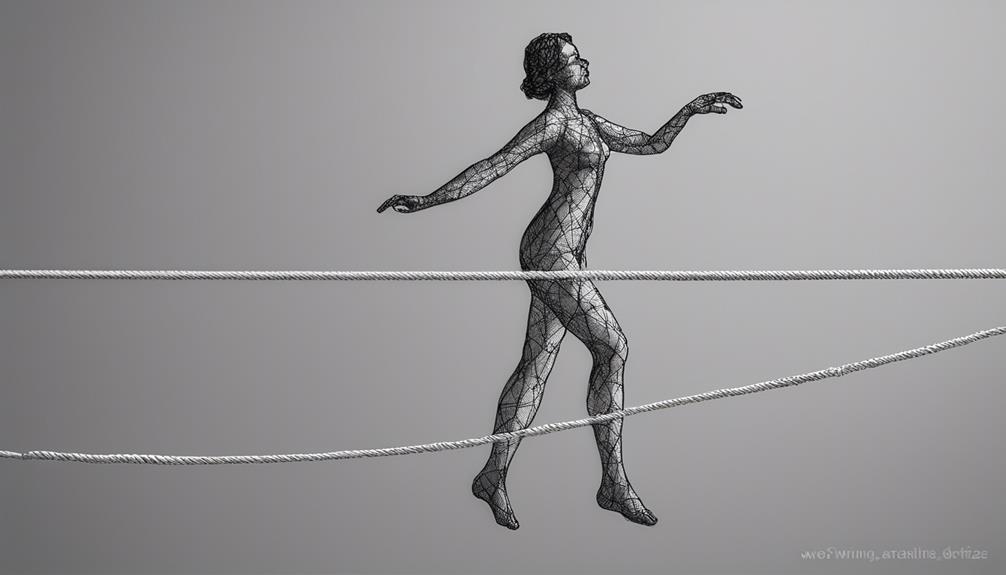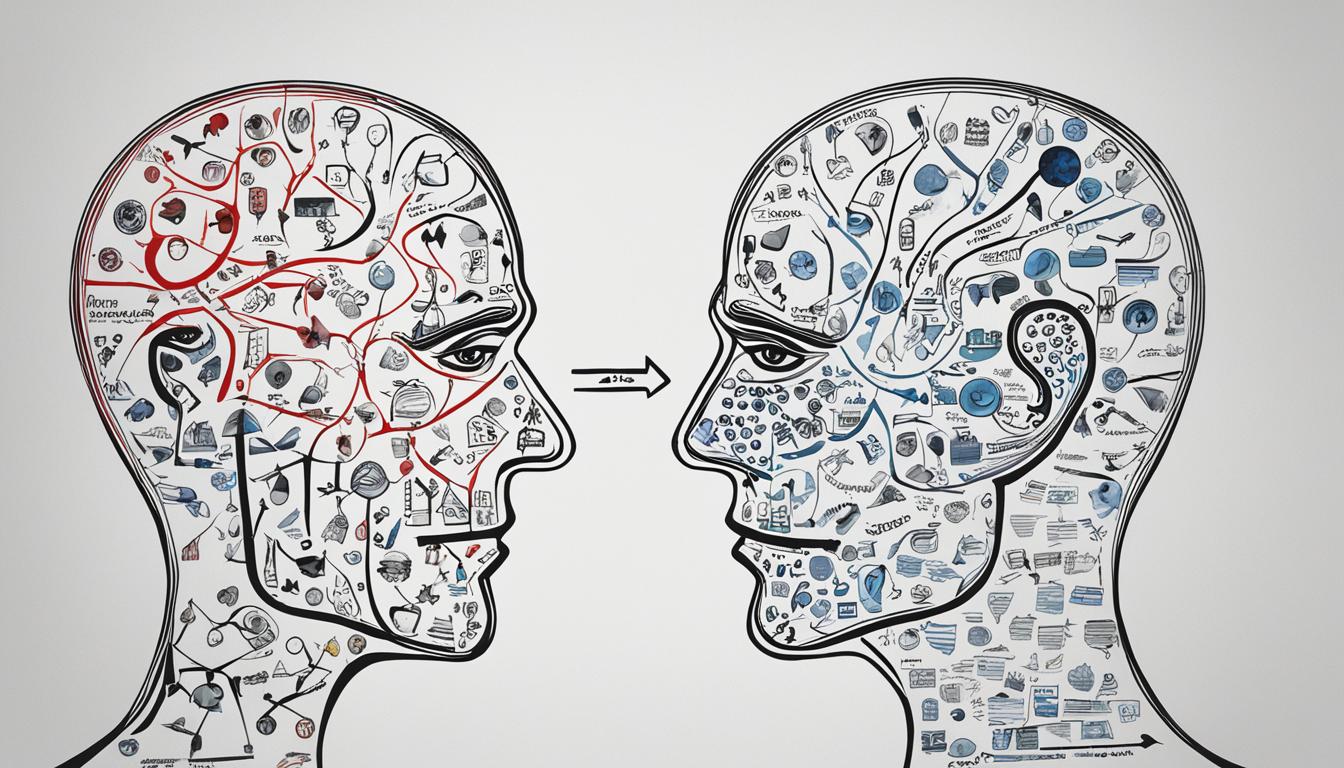Studying the nuanced aspects of personality disorders uncovers the fascinating unintentional similarities and differences between Borderline Personality Disorder (BPD) and Narcissistic Personality Disorder (NPD).
While these disorders may share certain characteristics, the nuances in their manifestations can shed light on the intricacies of human behavior and emotional regulation.
By exploring the key traits and behavioral patterns of individuals with BPD and NPD, we can start unraveling the puzzle of what sets them apart and how these distinctions impact their interactions and relationships.
Key Takeaways
- BPD is characterized by unstable mood, relationships, and fear of abandonment.
- NPD involves grandiosity, lack of empathy, and a chronic need for admiration.
- BPD individuals struggle with emotional regulation and engage in self-harming behaviors.
- While specific therapies like DBT exist for BPD, no empirically supported treatments are available for NPD.
Key Traits of Borderline Personality Disorder
What distinguishes Borderline Personality Disorder from other mental health conditions?
Borderline Personality Disorder (BPD) is characterized by a unique combination of symptoms that set it apart from other personality disorders. Individuals with BPD often exhibit persistent instability in mood, self-identity, and interpersonal relationships. This chronic instability can lead to difficulties in maintaining stable and healthy relationships, as well as challenges in regulating emotions and behaviors.
Moreover, individuals with BPD commonly struggle with feelings of emptiness, intense emotional reactions, and a chronic fear of abandonment. These individuals may engage in self-harming behaviors or experience suicidal ideation as a way of coping with their emotional turmoil.
Additionally, individuals with BPD often have a poor self-image and may find it challenging to control excessive anger or experience dissociation during times of stress.
Core Characteristics of Narcissistic Personality Disorder

Moving from the key traits of Borderline Personality Disorder to the core characteristics of Narcissistic Personality Disorder reveals distinct patterns of behavior and thought associated with these two personality disorders.
When examining Narcissistic Personality Disorder (NPD) within the Cluster B personality disorders, several core characteristics emerge:
- Grandiosity and a sense of superiority, coupled with an excessive need for admiration and attention, are hallmark features of NPD. Individuals with NPD often exhibit a belief in their own exceptional abilities and a desire for constant praise and validation.
- Lack of empathy is another defining trait of NPD. Those with this disorder struggle to recognize or understand the emotions and needs of others, leading to difficulties in forming genuine connections and displaying compassion.
- Entitlement and exploitation tendencies are prevalent in individuals with NPD. They may harbor a strong belief in their entitlement to special treatment and exploit others for personal gain without regard for the well-being of those around them.
Behavioral Patterns in Borderline Individuals
Borderline individuals demonstrate a pattern of persistent instability in mood, self-identity, and interpersonal relationships. Unlike individuals with narcissistic personality disorder (NPD), those with borderline personality disorder (BPD) often experience intense shifts in mood, ranging from euphoria to deep despair, which can occur rapidly.
This volatility can lead to impulsive behaviors, including reckless driving, substance abuse, or self-harm. The fear of abandonment is a significant driving force in their lives, causing them to go to great lengths to avoid real or perceived rejection. In relationships, they may resort to manipulation tactics to prevent being left alone.
Unlike narcissists who lack empathy and exploit others for personal gain, individuals with BPD have a desperate need for connection but struggle to maintain stable and fulfilling relationships due to their emotional dysregulation.
Understanding these behavioral patterns is crucial for effective diagnosis and treatment of borderline personality disorder.
Behavioral Patterns in Narcissists

Narcissists prominently display a chronic need for admiration and validation, actively seeking attention and praise to bolster their ego and self-worth. When considering the behavioral patterns in narcissists, several key traits emerge:
- Sense of Entitlement: Individuals with narcissistic personality disorder often believe they're special or unique, exaggerating their achievements and expecting special treatment from others.
- Lack of Empathy: People with NPD struggle to empathize with the emotions and perspectives of those around them, often prioritizing their own needs and desires above all else.
- Manipulative Behavior: Narcissists may manipulate others in their interpersonal relationships to maintain their grandiose self-image or to achieve personal gain, resorting to tactics such as hostility or discarding when their superiority is challenged.
These characteristics highlight the complex and challenging nature of narcissistic traits, distinguishing them from other personality disorders like Borderline Personality Disorder (BPD) or antisocial personality disorder. Understanding the symptoms of NPD can provide insight into the emotional volatility and interplay between the grandiose and vulnerable aspects of individuals with this disorder.
Contrasting Features of BPD and NPD
Considering the distinctive behavioral patterns observed in individuals with Narcissistic Personality Disorder, it becomes crucial to discern the contrasting features that delineate Borderline Personality Disorder from NPD. Borderline Personality Disorder (BPD) is characterized by unstable mood, self-identity, and relationships, while Narcissistic Personality Disorder (NPD) is marked by grandiosity, entitlement, and lack of empathy. Individuals with BPD struggle with feelings of emptiness and fear of abandonment, whereas those with NPD have a chronic need for admiration and validation. BPD is associated with intense emotional reactions and self-harming behaviors, while NPD involves a strong sense of superiority and manipulation tactics. BPD often leads to impairments in various aspects of life, including social and vocational functioning, while individuals with NPD may lead functional lives but prioritize personal gain. Treatment approaches differ, with specific therapies like dialectical-behavioral therapy (DBT) commonly used for BPD, while there are no empirically supported treatments for NPD.
| Borderline Personality Disorder (BPD) | Narcissistic Personality Disorder (NPD) |
|---|---|
| Unstable mood, self-identity, relationships | Grandiosity, entitlement, lack of empathy |
| Feelings of emptiness, fear of abandonment | Chronic need for admiration, validation |
| Intense emotional reactions, self-harming behaviors | Strong sense of superiority, manipulation tactics |
Frequently Asked Questions
What Is the Difference Between Borderline Personality Disorder and Narcissism?
When discussing the difference between borderline personality disorder (BPD) and narcissism, it's crucial to understand the contrasting core features of each condition.
BPD is characterized by emotional instability, fear of abandonment, and impulsive behaviors, while narcissism revolves around grandiosity, lack of empathy, and a constant need for admiration.
These distinctions are vital in diagnosing and treating individuals with these complex mental health conditions.
Can a Borderline Act Like a Narcissist?
Yes, a person with Borderline Personality Disorder (BPD) can sometimes exhibit behaviors resembling those of a Narcissistic Personality Disorder (NPD) individual. It's like a puzzle with overlapping pieces.
BPD individuals may display narcissistic traits due to their unstable sense of self and intense emotions.
Understanding these nuances is crucial in providing appropriate support and treatment for individuals navigating complex emotional landscapes.
What Is the One Question to Identify a Narcissist?
To identify a narcissist, we can ask, 'Does this person consistently display a lack of empathy towards others and a grandiose sense of self-importance?' This question can reveal key traits commonly associated with narcissistic personality disorder.
By observing patterns of behavior and responses to this inquiry, one can gain insight into whether an individual exhibits narcissistic tendencies.
This question serves as a starting point in recognizing potential narcissistic traits in a person.
Can a Borderline and Narcissist Be Together?
Yes, a borderline and a narcissist can be in a relationship, but it may be tumultuous. Their emotional volatility and lack of empathy can lead to challenges.
Understanding each disorder's traits is crucial for navigating the complexities. Therapy, such as DBT and CBT, can aid in developing healthier coping strategies.
Early intervention and proper diagnosis are key to managing these conditions and fostering a more harmonious connection.
Conclusion
In conclusion, while both Borderline Personality Disorder and Narcissistic Personality Disorder can present challenges in relationships and functioning, the underlying motivations and behaviors of individuals with these disorders differ significantly.
It's crucial to seek professional help for accurate diagnosis and appropriate treatment.
Ironically, understanding and acknowledging these differences can help individuals navigate the complexities of these disorders and work towards healthier relationships and improved well-being.









